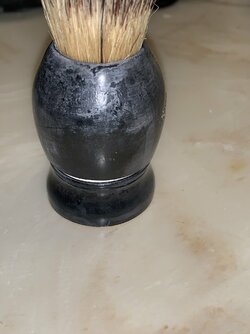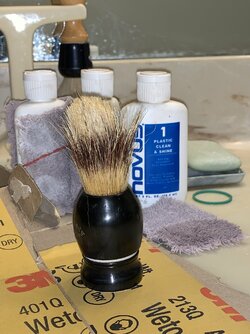I bought this in an antique shop and wanted to restore it, but I can't remove the dingy, whitish stuff on the exterior of the handle. I found a thread of someone unsuccessfully trying to do so... mine is in better shape than his, but it's worthless to me in its present ugly presentation  Here's the link to what didn't work, anyone have any ideas? Thanks!
Here's the link to what didn't work, anyone have any ideas? Thanks!

 www.badgerandblade.com
www.badgerandblade.com


Please help save my Ever-Ready 69
I’ve never restored a brush before, but picked this up for a few bucks and wanted to give it a try. I had a browse of the forum and have read about others’ restorations, but I haven’t seen any that looked this far gone to start... (looks a bit like the former owner used it as a toothbrush for a...
 www.badgerandblade.com
www.badgerandblade.com
Attachments
Last edited:






